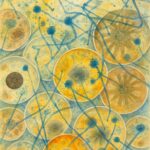Link to Pubmed [PMID] – 23401590
J. Immunol. 2013 Mar;190(6):2818-27
The pathogenicity of Candida glabrata to patients remains poorly understood for lack of convenient animal models to screen large numbers of mutants for altered virulence. In this study, we explore the minihost model Drosophila melanogaster from the dual perspective of host and pathogen. As in vertebrates, wild-type flies contain C. glabrata systemic infections yet are unable to kill the injected yeasts. As for other fungal infections in Drosophila, the Toll pathway restrains C. glabrata proliferation. Persistent C. glabrata yeasts in wild-type flies do not appear to be able to take shelter in hemocytes from the action of the Toll pathway, the effectors of which remain to be identified. Toll pathway mutant flies succumb to injected C. glabrata. In this immunosuppressed background, cellular defenses provide a residual level of protection. Although both the Gram-negative binding protein 3 pattern recognition receptor and the Persephone protease-dependent detection pathway are required for Toll pathway activation by C. glabrata, only GNBP3, and not psh mutants, are susceptible to the infection. Both Candida albicans and C. glabrata are restrained by the Toll pathway, yet the comparative study of phenoloxidase activation reveals a differential activity of the Toll pathway against these two fungal pathogens. Finally, we establish that the high-osmolarity glycerol pathway and yapsins are required for virulence of C. glabrata in this model. Unexpectedly, yapsins do not appear to be required to counteract the cellular immune response but are needed for the colonization of the wild-type host.
